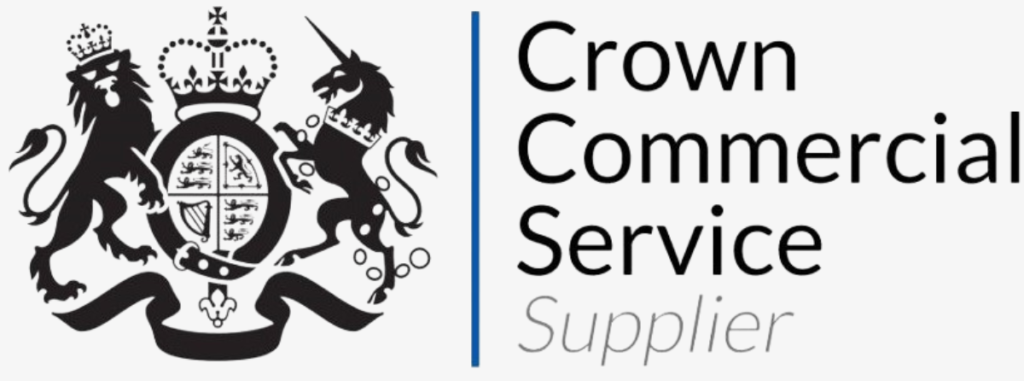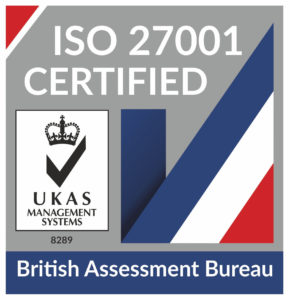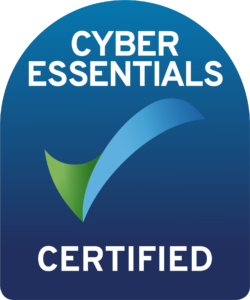
HaloITSM Guides
Documentation to assist with the setup and configuration of the HaloITSM platform
General Settings
General Settings
| Field | Type | Description |
| Asset Tag must be unique | Checkbox | When selected, the Asset Tag (Asset Number) for an Asset must be unique. This will mean any assets imported into Halo manually or via an asset integration, will require a unique Asset Tag, or else it will throw the error "Asset tag must be unique". |
| Automatically generate next Asset number/tag when creating new Assets | Checkbox | When enabled, this will automatically create an asset number/tag when you create a new asset in Halo. Gives the next asset created, the number/ tag which is next in the sequence. |
| Colour Assets based on whether they are covered by Agreements | Checkbox | When selected, Assets covered by an active Agreement will change to a green icon. |
| Assets are covered by Agreements before the Agreement start date | Checkbox | When selected, Assets added to Agreements will be considered as covered by the Agreement - even if the Agreement start date has not yet been met. |
| Do not show system field Status | Checkbox | When selected, the 'Status' field is not visible on the asset details tab, when you click into an asset. |
| Do not allow editing status field on Asset details screen | Checkbox | When selected, the Status field on an Asset (if visible) will not be editable. |
| Status of New Assets | Single Select | Determines the default status to use for newly created Assets. This will mean all assets created and imported (even via integrations) will have this status set. Note that if you are using the Intune integration, it will overwrite this. When importing assets, the column header status_id will overwrite the "status of new assets" if in use and status ID's have been set on the rows of the import spreadsheet. |
| Enable Scanners | Checkbox | Allows the use of barcode and QR code scanners. When this is enabled, you will be able to scan assets from your asset list. Navigate to the top RHS of the page, hover over the ellipse of the asset list, you will then see the options for scan QR code and scan Barcode, click either of these will enable your devices camera to take photos of barcodes or QR codes by holding up i.e. the barcode of the product to your screen, this will then take a photo and automatically navigate you to the new asset screen. |
| Barcode Decoder Type to Use | Single Select | Decide the decoder to use for barcodes that are being scanned into Halo. |
| Allow all Users to view all Assets at their Site | Checkbox | Allows any user of a site to view all of the assets attached to the site they are a part of. |
| Display the User Column against Assets | Checkbox | Displays a column to show the user attached to an asset on the asset column view, this will be visible on the end-user portal. |
| Link new Assets to the Clients most recently active Agreement | Checkbox | links the new asset to the most recently active Agreement used by a customer. |
| Show the User's assets on the new Ticket screen | Checkbox | When creating a ticket, once a user is selected, their assets will be visible on the new ticket screen. |
| Show the Users assets on the Ticket Details screen | Checkbox | On the users tickets, it will show what assets they are linked to. This setting will apply to existing tickets when it is turned on. |
| Show the Users assets on the call screen | Checkbox | On the call screen pop up window, it will show the assets the user is linked to. |
| When assets are in stock locations integrations cannot move them | Checkbox | When selected, assets that are synced over on a recurring schedule (updated) by integrations, will not automatically be moved stock location in Halo as well. Example: There is a Laptop that you are carrying out the entire Sales process on within Halo, so you create a quote, then sales order and purchase order for the Laptop, it exists now as an asset in Halo, it hasn't been consigned(Delivered) on the Sales Order yet. Then the asset tool i.e. IT Glue, ConnectWise Automate, has been installed on the Laptop, without this setting on, the Laptop would be moved to the stock location in Halo which corresponds to the customer the Laptop is at within IT Glue. When this setting is enabled, the integration will not affect the stock location of the assets that are not yet consigned on Sales Orders, so you can still carry out the SOP's for this order and not have the RMM affect it. |
| Do not show Asset warranty expiration alert | Checkbox | When selected, this setting will stop the alert from appearing when an asset is close to expiring. You can set up automated tickets to get a new ticket logged when an asset is close to warranty expiration. |
| Show related services on Asset dependency diagrams | Checkbox | When Selected, if an asset has relationships and is related to a service (there will be a dependencies tab on the asset, and dependencies on the related assets tab of the ticket), there will be a checkbox option under the dependencies tab of an asset to "Show related services" |
| Show related licences on Asset dependency diagrams | Checkbox | When selected, if there are licences related to the asset/s on the ticket (there will be a dependencies tab on the asset, and dependencies on the related assets tab of the ticket), it will show the relationship on the asset dependency diagram. |
| Show Asset key fields on Asset dependency diagrams and dependency warnings | Checkbox | The Key fields selected for the asset type of the asset, will display on the dependency diagram, when this setting is enabled. |
| Only show direct relationships on the dependency chart | Checkbox | When selected, the dependency chart for assets, will only show parent child relationships, the other dependencies will not show. |
| Allow Sites assets to be determined by it's end-user | Checkbox | When selected, If an asset is assigned to a user, the assets site will be updated to be under the same site as the user it is attached to. |
| Fields to display when Assets are displayed on Tickets or in search results | Single Select | The details of each asset shown on tickets or when searching assets, can be chosen based on this setting |
| Automatically load the dependencies chart | Checkbox | Automatically load the dependencies chart under the dependecies tab of an asset (if visibile), instead of having to click on the load button. |
| Dependency chart maximum parent depth (-1 = No limit) | Integer | The maximum number of parent dependencies shown on the chart, if set to 0, no parent dependencies are shown. |
| Dependency chart maximum child depth (-1 = No limit) | Integer | The maximum number of child dependencies shown on the chart, if set to 0, no child dependencies are shown. |
| Asset Permission Type | Single Select | Decide whether to delegate permission based on agent permissions or access control Use Read/Write permissions for Asset Types and Assets - When selected asset access will be determined by agent permissions against the agent's profile/role. Use access control for Asset Groups, Asset type and Asset access is implied from their group - When enabled agent access to assets will be determined by access control set against the asset group. If an agent has been given access to an asset group, this access will apply to all assets in that group regardless of asset type. Use access control for Asset Groups and asset types. Group access is required to see the group in lists. Asset access is implied from its type. - When enabled access control can be set for each asset group and each type within that group. In order to access an asset type the agent must have access to the group it is in. If the agent has been given access to the asset type but not the group, they will not be able to access the assets. |
| Show the 'Generate PDF' button | Checkbox | When disabled, the "Generate PDF" button will not show on assets. |
| Default Template for Assets | Single Select | Decide the default template to use when generating an asset, the default generates a barcode for the asset. |
| Default Template for Bulk Assets | Single Select | Decide the default template to use when generating a assets in bulk, the default generates a barcode for the asset. |
| Asset Search Method | Single Select | This determines the method used when searching for assets. |
| Ticket closure can be prevented based on Asset Field values | Single Select | When enabled, single select asset fields and asset custom fields can be configured to prevent ticket closure when they contain a chosen value. This is configured wen editing the single select value under the asset/custom field. |
Views
| Field | Type | Description |
| Default View of Assets | Single Select | Decide the viewing option given by default when clicking into the Assets module i.e. "Assets by Group". May have to log out and back in for setting to take effect. |
| Allow Grouping of Lists | Checkbox | When checked, this will allow Lists to have an additional level of aggregation. These groups will be pre-set, and will not be able to be edited on-the-fly via the Assets screen. They can, however, be configured via the "Configure List Groups" menu which will become available when this box is checked. |
| Configure Lists | Button | This will open up the menu for creating and modifying any Lists that you use for Assets. These can be given a name, a sequence, a visibilty level, and a default column profile. The main configuration of these resides in the Filters section, where you can dictate which Assets will appear in this List with different Asset-based criteria. |
| Configure List Groups | Button | This will open up the menu for creating and modifying List Groups. These are used to aggregate Lists into groups, which can be used to further organise your List views. They solely consist of a Name and a sequence, and will need to be added to via the List configurations themselves. |
| Show a table view for Child/Parent Linked Assets instead of tiles | Checkbox | When selected, this option will change the view given on the relationships tab of an asset. |
| Default Column Profile | Single Select | The columns you will see in the table view of the assets by default. This can be overridden per Agent in the Agent preferences. |
| Configure Column Profiles | Button | When used, the columns shown for each asset on the default view of "Assets" can be customised (custom columns to add to a profile can be created in "Asset Fields"). |
| Show inactive Assets on the Site details screen by default | Checkbox | When enabled, the inactive assets at a site, will show by default. With this setting turned off, to show inactive assets at a site, you must hover over the ellipse within the asset tab of a site and then click "Show inactive assets" |
Imports
| Field | Type | Description |
| Unique identifier for Asset Types | Single Select | This field is used to match import rows to existing Halo records. If matched, the Halo record will be updated. |
| Unique identifier for Assets | Single Select | This field is used to match import rows to existing Halo records. If matched, the Halo record will be updated. |
| Secondary Matching Field for Assets | Single Select | This Field will be used to match records when no matches are found with the unique identifier. |
| Asset Matching Value Exclusions | List | Decide which values you do not want to match on. So for example if the 'Serial Number' fields value pulled from an integration was always set to 'None' for some assets and you had the unique identifier single select option set to 'Serial Number' then it would cause issues. Adding in 'None' to this exclusion list, means that the system knows to ignore matching when the unique identifiers row value on the import screen is 'None'. Essentially you can add exceptions for asset matching values such as 'None'. |
| When comparing data for Asset Matching remove blank spaces and hyphen characters | Checkbox | Remove any unwanted characters or spaces when checking if assets match. |
| Turn off automatic creation of users from an Asset import | Checkbox | When selected, if doing an asset import with a user that is not currently in your system it will not import the user. |
| Import Asset Types | Button | Used for importing new Asset types, a name and group must be chosen. (On the top left beside "Choose File" a list of all import samples: Users, Assets, Customers, etc... Can be downloaded) |
| Import Assets | Button | Used for importing Assets. (On the top left beside "Choose File" a list of all import samples: Users, Assets, Customers, etc... Can be downloaded) |
Popular Guides
- Asset Import - CSV/XLS/Spreadsheet Method
- Call Management in Halo
- Creating a New Application for API Connections
- Creating Agents and Editing Agent Details
- Departments and Teams
- Halo Integrator
- Importing Data
- Multiple New Portals with different branding for one customer [Hosted]
- NHServer Deprecation User Guide
- Organisation Basics
- Organising Teams of Agents
- Step-by-Step Configuration Walk Through



